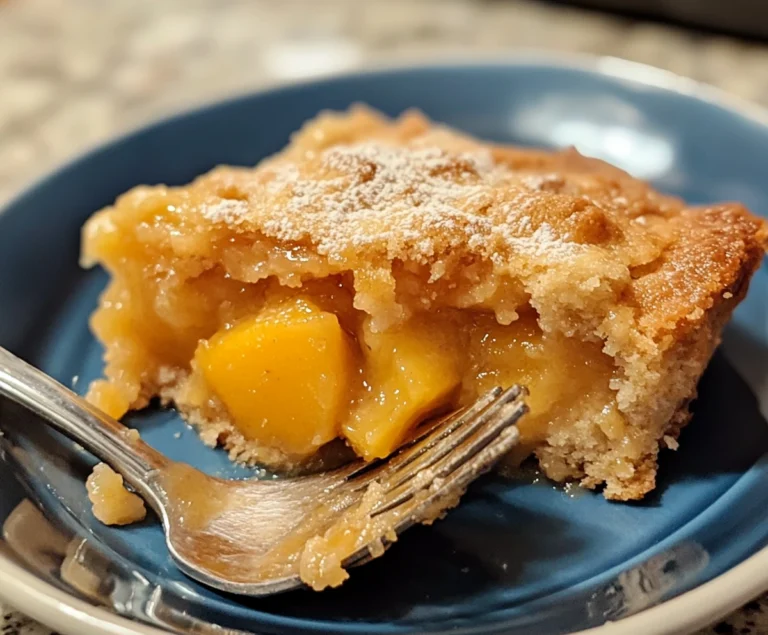What is the Biggest Mistake to Avoid When Making a Dump Cake?
What is the Biggest Mistake to Avoid When Making a Dump Cake?
Biggest mistake when making dump cake are a favorite for many home bakers due to their simplicity, versatility, and delicious results. With only a handful of ingredients and minimal preparation, these cakes can be whipped up quickly, making them ideal for unexpected guests or last-minute cravings. However, there is one critical mistake that can turn a perfectly good dump cake into a disaster: mixing the ingredients together. Understanding why this mistake should be avoided and learning the correct layering techniques are essential for achieving a perfect dump cake every time.
This comprehensive guide will explore the importance of proper layering, detail various pineapple dump cake variations, and provide solutions for common mistakes. Additionally, we’ll share expert tips for choosing the right ingredients and troubleshooting problems to ensure your dump cakes are always a hit.
Understanding the Concept of Dump Cakes
What is a Dump Cake?
A dump cake is a simple, quick dessert made by “dumping” ingredients into a baking dish in layers without mixing. Unlike traditional cakes, dump cakes do not require any blending or beating. The result is a rustic dessert with a slightly crisp, buttery top and a moist, fruity filling. This makes them perfect for casual gatherings, potlucks, or weeknight treats.
The traditional components of a dump cake include:
- Fruit Filling: Typically, canned fruit or pie filling (like cherry, apple, peach, or pineapple).
- Dry Cake Mix: A boxed cake mix (usually yellow or white).
- Butter: Sliced or melted, spread evenly over the top.
- Optional Extras: Chopped nuts, shredded coconut, chocolate chips, or spices for added flavor and texture.
Why is Pineapple Dump Cake So Popular?
There are several reasons why dump cakes are so popular:
- Ease of Preparation: There’s no need to measure ingredients precisely, blend them together, or worry about overmixing.
- Versatility: You can create countless variations by changing the fruit filling, cake mix, or adding extras.
- Minimal Cleanup: Dump cakes require fewer dishes since everything is prepared directly in the baking dish.
- Great for Beginners: With a basic understanding of the method, even novice bakers can create delicious desserts with minimal effort.
The Biggest Mistake: Mixing Ingredients
The most common mistake when making a dump cake is mixing the ingredients. While it may seem logical to stir the dry cake mix with the fruit filling and butter, this action goes against the core principle of a dump cake. According to Southern Living, mixing the ingredients together can lead to a dense, gummy texture instead of the light, crumbly topping that defines a perfect dump cake.
Instead of mixing, you should layer the ingredients directly in the baking dish. The layering technique allows the butter to melt over the cake mix, seeping through to create a delicious, golden-brown crust. Epicurious emphasizes that not stirring is crucial for the cake to bake properly. The dry cake mix must remain on top to absorb moisture from the fruit filling below, resulting in a perfect balance of textures.
Common Variations of Dump Cakes
There are countless ways to customize a dump cake, allowing you to get creative with flavors and ingredients. Here are a few popular variations:
1. Cherry Dump Cake
- Ingredients: Cherry pie filling, white or yellow cake mix, and butter.
- Instructions: Layer the cherry pie filling at the bottom of a baking dish, sprinkle the cake mix evenly over the filling, and top with slices of butter. Bake until the top is golden brown and crispy.
2. Apple Dump Cake
- Ingredients: Apple pie filling, spice cake mix, cinnamon, and butter.
- Instructions: Spread the apple pie filling in the baking dish, sprinkle with cinnamon, cover with the spice cake mix, and add pats of butter on top. This variation benefits from a warm, autumnal flavor profile.
3. Peach Dump Cake
- Ingredients: Peach slices (with juice), yellow cake mix, and butter.
- Instructions: Pour the peaches (including juice) into the dish, sprinkle the dry cake mix evenly, and layer with butter. Bake until bubbly and golden.
4. Pineapple Dump Cake
- Ingredients: Crushed pineapple, yellow cake mix, butter, and optional shredded coconut.
- Instructions: Spread the pineapple in the dish, layer with cake mix, top with butter, and sprinkle shredded coconut for a tropical twist. For a detailed recipe, check out the guide on making a Pineapple Dump Cake.
5. Berry Medley Dump Cake
- Ingredients: Mixed berries (blueberries, raspberries, blackberries), lemon cake mix, and butter.
- Instructions: Layer the mixed berries in the dish, sprinkle with lemon cake mix, and dot with butter. The tartness of the berries pairs well with the sweet cake mix.
Why Layering Matters in Dump Cakes
Proper layering is crucial in making a Biggest mistake when making dump cake for several reasons:
- Moisture Distribution: The fruit filling at the bottom provides necessary moisture. When topped with dry cake mix, the mix absorbs just the right amount of liquid without becoming overly wet or soggy.
- Texture Contrast: Layering allows the butter to melt evenly over the dry mix, forming a crispy, golden crust while keeping the fruit layer soft and juicy underneath.
- Even Cooking: The layering method ensures even heat distribution, which helps the cake bake uniformly from top to bottom.
- Visual Appeal: A properly layered dump cake showcases distinct layers that make it more visually appealing. The vibrant fruit contrasts with the golden crust, creating an inviting dessert.
The Science Behind Not Mixing
The key to a perfect dump cake lies in understanding the basic science of baking:
- Butter Distribution: When butter is placed on top of the dry cake mix, it melts slowly during baking, creating steam that helps the cake rise. The melted butter also facilitates Maillard browning, giving the cake its desirable crisp texture.
- Absorption: The dry cake mix absorbs moisture from the fruit filling below. This absorption process allows the cake to maintain a fluffy texture on top while forming a moist base.
- Heat Conduction: The layering method allows heat to penetrate evenly throughout the dish. This prevents overcooking at the bottom while ensuring the top gets perfectly browned.
Other Common Mistakes in Making Dump Cakes
While mixing the ingredients is the most critical mistake, there are several other common errors to avoid:
1. Using Too Much or Too Little Butter
- Issue: Butter is essential for achieving a crispy top. Too much butter can make the cake greasy and heavy, while too little can result in a dry and uneven crust.
- Solution: Use just enough butter to cover the cake mix evenly. Cut it into thin slices or small cubes to ensure even distribution across the surface.
2. Incorrect Placement of Ingredients
- Issue: Some people accidentally place the cake mix at the bottom or in the middle, disrupting the layering process.
- Solution: Always follow the correct order: fruit filling first, then dry cake mix, followed by butter. This sequence ensures the cake bakes correctly and achieves the desired texture.
3. Not Allowing Proper Baking Time
- Issue: Underbaking can result in a raw, gooey middle, while overbaking can make the top too hard.
- Solution: Follow the recommended baking time (usually 40-45 minutes at 350°F) and check for doneness by inserting a toothpick into the center. The top should be golden and crisp, and the filling should be bubbling.
4. Choosing the Wrong Type of Cake Mix
- Issue: Not all cake mixes are suitable for all types of dump cakes.
- Solution: Choose a cake mix that complements the fruit filling. For example, a yellow or white cake mix is versatile and works well with most fruits, while a spice cake mix pairs beautifully with apple or pumpkin fillings.
5. Overcrowding the Pan
- Issue: Using a dish that is too small can cause the cake to overflow or bake unevenly.
- Solution: Select a baking dish that provides enough space for the cake to rise and for the ingredients to spread out evenly. A 9×13-inch pan is generally ideal.
How to Properly Layer a Dump Cake
To make the perfect dump cake, follow these detailed steps:
- Start with a Fruit Filling: Choose a high-quality fruit filling. Spread it evenly across the bottom of a greased baking dish. Ensure the filling is distributed in a single, even layer.
- Add the Dry Cake Mix: Sprinkle the dry cake mix evenly over the fruit filling. Take care not to stir or mix. The cake mix should form a uniform layer that fully covers the fruit.
- Top with Butter: Cut the butter into thin slices or cubes and place them evenly over the cake mix. The butter should cover as much of the surface as possible to ensure even browning. Alternatively, melt the butter and drizzle it over the top for more uniform coverage.
- Bake Until Golden: Place the baking dish in a preheated oven (usually 350°F) and bake for 40-45 minutes, or until the top is golden and the filling is bubbling around the edges.
Choosing the Right Ingredients for a Dump Cake
The quality of your dump cake depends on the ingredients you choose:
1. Cake Mix
- Tip: Opt for a high-quality boxed cake mix. Yellow and white mixes are the most versatile, but you can experiment with other flavors like chocolate, lemon, or spice to complement different fillings.
2. Fruit Fillings
- Tip: Canned fruit fillings work best because they are already sweetened and have the right consistency. Fresh fruits can be used, but they should be pre-cooked or macerated to match the texture of canned fillings. Consider exploring recipes like this Banana Zucchini Bread for unique combinations.
3. Flavor Enhancers
- Tip: Extras like chopped nuts, shredded coconut, chocolate chips, or spices (cinnamon, nutmeg, etc.) can enhance the flavor profile. Add these toppings after the butter layer to prevent them from sinking into the fruit filling.
Troubleshooting Common Dump Cake Problems
Even with the right techniques, dump cakes can sometimes go awry. Here’s how to troubleshoot common problems:
1. Cake Too Dry
- Issue: The cake is overly dry or crumbly.
- Solution: Ensure you use enough butter and consider adding a bit of liquid, like juice from the fruit filling. Covering the cake with foil halfway through baking can also help retain moisture.
2. Cake Too Soggy
- Issue: The cake is too moist or soggy.
- Solution: This often happens when too much liquid is used or the cake mix isn’t distributed evenly. Make sure to use just the right amount of juice and ensure the cake mix is evenly spread.
3. Uneven Baking
- Issue: Parts of the cake are undercooked while others are overcooked.
- Solution: Ensure the butter is evenly distributed across the cake mix. Rotate the pan halfway through baking for even heat distribution.
4. Hard or Burned Top
- Issue: The top of the cake is too hard or burnt.
- Solution: Reduce the baking time slightly, or lower the oven temperature by 25°F. You can also cover the cake with foil if it starts browning too quickly.
Frequently Asked Questions (FAQs)
Can I mix the ingredients before baking?
No, you should never mix the ingredients in a dump cake. Mixing results in a dense texture, while layering keeps it light and crisp. For more on proper dump cake methods, check out this guide on making a Strawberry Cheesecake Dump Cake.
What type of cake mix works best?
Yellow cake mix is versatile and pairs well with most fruits, but white, spice, or chocolate mixes can add unique flavors. Choose a mix that complements the fruit filling you’re using.
How do I keep my dump cake from being too dry?
Use enough butter and add a bit of liquid, like juice from the fruit filling, if needed. Covering the cake with foil halfway through baking can also help retain moisture.
Can I use fresh fruit instead of canned?
Yes, fresh fruit works well, but it should be cooked and sweetened beforehand to match the consistency of canned fruit. Consider using fresh peaches, apples, or berries for a more natural flavor.
What is the ideal baking temperature and time for a dump cake?
Most dump cakes bake well at 350°F for 40-45 minutes. However, oven temperatures can vary, so keep an eye on your cake. The top should be golden and crispy, and the filling should be bubbling.
Conclusion
To create a perfect dump cake, avoid the most common mistake of mixing the ingredients. Focus on the proper layering technique to achieve a delicious, moist, and visually appealing dessert. By choosing the right ingredients, layering them correctly, and following the baking tips provided, you will create a foolproof dump cake every time. For more dessert ideas and tips, explore recipes like this Strawberry Cheesecake Dump Cake. Happy baking!







